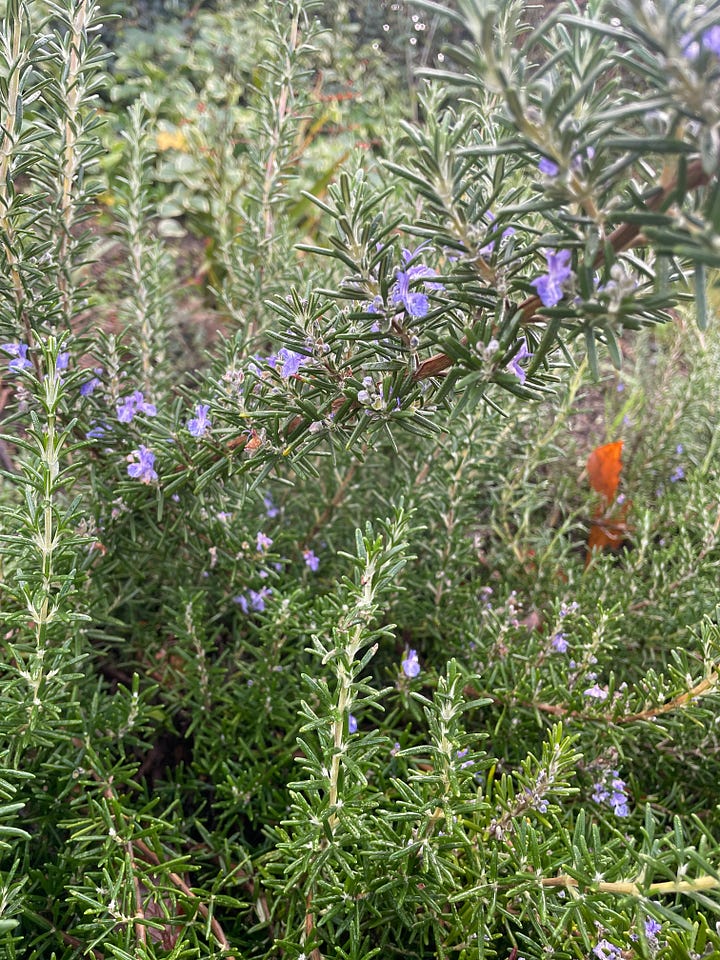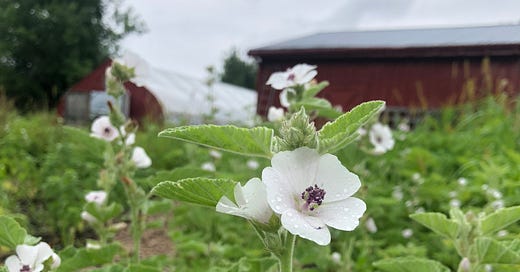My last newsletter focused on 10 native medicinal plants you can add to your garden this year. Now I’m in your inbox with 10 imported herbs that I can’t live without. I love to promote native plants because they are beneficial to the whole ecosystem and are often overlooked. And at the same time, I also grow the following list because they are medicinals I treasure and they behave well in my northeastern garden (meaning they do not escape and take over the understory of the local forests wiping out native habitat and biodiversity like some plants truly do!)
Shall we explore the nuance a little further? You might have noticed the USDA zone where you live shifting over the past few years, certainly over the last decade. As our climate changes, it’s crucial to understand what plants will be adaptive. The ranges of our native plants are changing and shifting. I think we need to shift with them. Plants that are native to the southeast might start thriving in the northeast. And on another note, what exactly is native is sometimes up for debate - after all, people have been moving around the globe and bringing their favorite plants with them for thousands of years.
Ultimately my take is this:
It’s exciting and radical to help people get as familiar with Skullcap and Lobelia as they are with Chamomile and Lemon Balm. I believe focusing on native plants is a net positive for our entire ecosystems and I want more people to cultivate and steward them.
There are many culturally important food and medicine plants that are not native to this land but pose no threat. Some of these plants live as perennials in my gardens and others I collect seed from year after year to keep them going. I’m grateful for their medicine and can’t see a world in which I’m not cultivating and sharing them.
There is huge difference between planting an introduced plant that will stay in your garden versus one that will spread through local wild places and impact biodiversity and native habitat. Do a little research to make sure you are planting plants that will grow harmoniously in your region.
Learn about the plants that are “invasive” in your region. Don’t plant them but do befriend them, learn how they are worked with in the lands where they come from and you might have a new favorite wild edible or medicinal.
Okay, let’s get into it!!!
Top 10 non-native plants to add to your garden
10. Rosemary (Salvia rosmarinus)


Sun needs: full sun
Soil needs: well drained
I first fell in love with Rosemary when I was growing it in my community garden in Philadelphia and would snip the fresh tips to chop up and add to my roasted sweet potatoes in their last 15-20 minutes of roasting. Truly divine - one of my favorite flavor combinations, especially paired with a tahini dressing but I’m losing the plot here.
Rosemary is in the mint family and like many of its relatives the medicine is highly aromatic and promotes movement in the body. The adage “Rosemary for Remembrance” hints at Rosemary’s indication for sharpening cognitive processes. In my Tune In Tonic tincture formula for supporting cognitive function, I combined Rosemary with Gotu Kola and Bacopa. In that formula, Rosemary in a very small part acted as a catalyst, bringing the formula to the brain.
Rosemary is sensitive to frosts and I have found success growing it perennially by the south face of buildings in Philadelphia and along the border of hoop houses in colder upstate New York.
First photo by Suntrap, second by Fine Gardening Magazine




